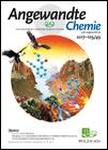版权所有:内蒙古大学图书馆 技术提供:维普资讯• 智图
内蒙古自治区呼和浩特市赛罕区大学西街235号 邮编: 010021

作者机构:College of Chemistry and Chemical Engineering Hunan University Changsha 410082 China State Key Laboratory of Petroleum Pollution Control Beijing 102206 China Greater Bay Area Institute for Innovation Hunan University Guangzhou 511340 China Division of Physical Science and Engineering 4700 King Abdullah University of Science and Technology (KAUST) Thuwal 23955-6900 Kingdom of Saudi Arabia School of Chemistry and Chemical Engineering/State Key Laboratory Incubation Base for Green Processing of Chemical Engineering Shihezi University Shihezi Xinjiang 832003 China Hunan Provincial Key Laboratory of Flexible Electronic Materials Genome Engineering School of Physics and Electronic Science Changsha University of Science and Technology Changsha 410114 China
出 版 物:《Angewandte Chemie》
年 卷 期:2024年第137卷第4期
学科分类:081704[工学-应用化学] 08[工学] 0817[工学-化学工程与技术]
主 题:Molecular weaving Gas separation Covalent organic frameworks Membrane separation
摘 要:Covalent organic frameworks (COFs) exhibit considerable potential in gas separations owing to their remarkable stability and tunable pore structures. Nevertheless, their application as gas separation membranes is hindered by limited size-sieving capabilities and poor processability. In this study, we propose a novel molecular weaving strategy that combines hydroxyl polymers and 2D TpPa−SO 3 H COF nanosheets, achieving high gas separation efficiency. Driven by the strong electrostatic interactions, the hydroxyl chains thread through the COF pores, effectively weaving and assembling the composites to achieve exceptional flexibility and high mechanical strength. The penetrated chains also reduce the effective pore size of COFs, and combined with the “secondary confinement effect stemming from abundant CO 2 sorption sites in the channels, the PVA@TpPa−SO 3 H membrane demonstrates a remarkable H 2 permeance of 1267.3 GPU and an H 2 /CO 2 selectivity of 43, surpassing the 2008 Robson upper bound limit. This facile strategy holds promise for the manufacture of large-area COF-based membranes for small-sized gas separations.